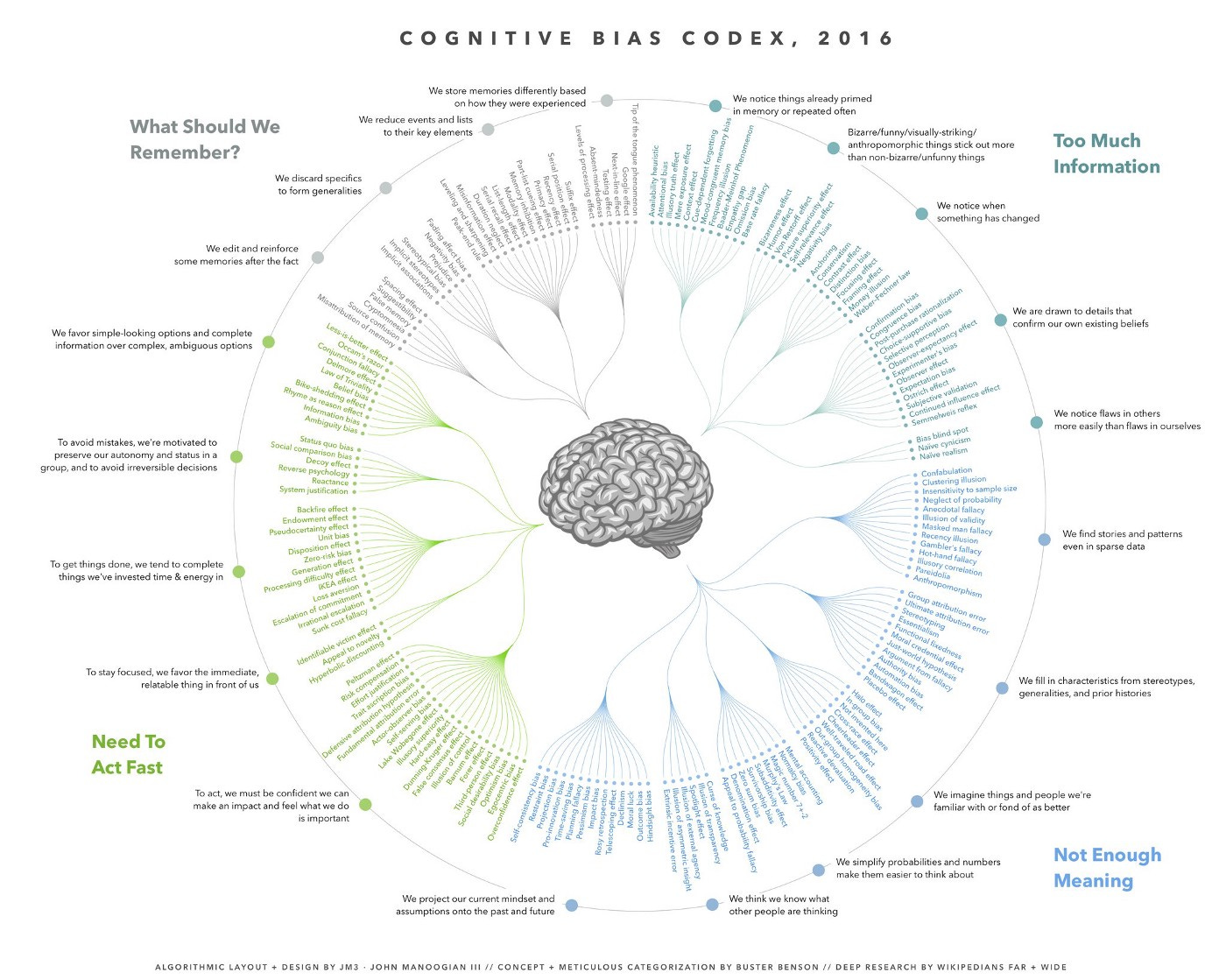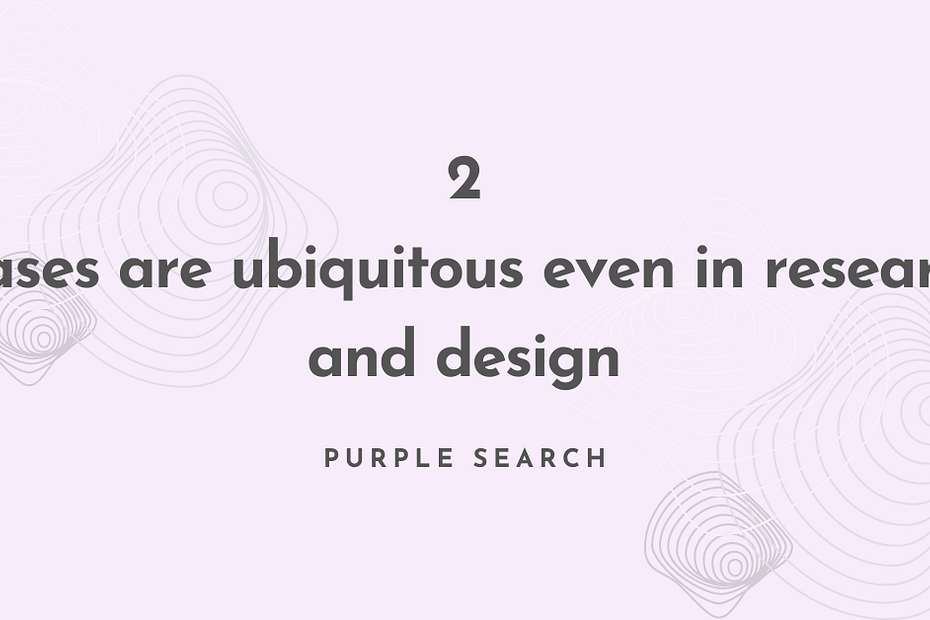Newsletter
Purple Search is a monthly newsletter about design, research, tech, and the self. I’ve also published this post on substack’s blog/newsletter platform. If you like what you see and would like to receive each issue in your mail, subscribe here. 😉
Since I returned to school, my mental health has bloomed. I feel loose and free because I recently left a suffocating environment and feel optimistic about my freelancing and job hunt. But, my productivity has lessened. So it feels like this:

This month, I’m going to write about biases. It should have come last week, but I struggled to submit my dissertation — I did!
During my first year in the university, I observed how gender biases contested women in leadership and society. One time, while I lounged in the student secretariat, a male student urged me to run for faculty vice president. I refused and jokingly retorted that I would prefer to run for president because why assist when I could be number 1 😏? He, apparently disgusted, said, “But you are a lady!”
To him and many others, women were too emotional and weak to lead and were only good as assistants.
I had to cope with male lecturers making sexist remarks while teaching. One blatantly declared that once a woman marries, she becomes her husband’s property. I heard male — and female — students disdain female political candidates, asking how their period would affect their leadership abilities and giving the “women are too emotional” excuse. Most Nigerians (and other world dwellers) are innately unfair because their cultures and religions endorse it.
Last year or so, I read an article about how a nurse raped a patient. I assumed the nurse was a woman until the article referred to the nurse as a man. I never guessed the nurse was male because my mind subconsciously assumed the nurse was a woman.
And you know what? The examples above show that biases do more harm than good in all spheres of life, including Research and Design.
You are biased
Each time you actively look for data that confirms your beliefs without considering other angles, discriminate against certain groups, refuse to let go of something that’s failed after spending much effort and time, or feel what you have done is the best thing ever, you are being biased.
Biases are ubiquitous, either conscious or unconscious and categorised into: cognitive biases, prejudices, contextual biases, implicit biases and statistical biases.
Resource
Check out CuriosityTank’s definition of Bias: Bias | UX Lex | Curiosity Tank
Biases force us to misinterpret ourselves, ideas, things or people. Often, these thoughts are unfair, sometimes malicious, inaccurate, discriminatory, and prejudiced. They distort our decisions.
When our Research and Design processes include biases, we get skewed data. To avoid inaccuracy, we must know the biases that exist and how they relate to the problem we want to solve.
There are 175 cognitive biases…
Cognitive biases are shortcuts our brains create to understand the world. Buster Benson said they help us solve four problems: “Information overload, lack of meaning, the need to act fast, and figuring out what needs to be remembered for later.”
The problem is that there are over 175 cognitive biases — and I only know three 😂 (thanks to the Team W). Anyway, these resources should help:
Resources
- Buster Benson’s Cognitive Bias Cheat Sheet: This will help you have the biases at your fingertips
- The Decision Lab’s List of Cognitive Biases and Heuristics.
- Here’s a detailed map by Wikipedia on Cognitive Biases: Cognitive Bias Codex.

Beyond cognition & inclusive design
What about biases that skew our perceptions of gender, race, and ethnicity? Biases that discriminate. Sometimes, we aren’t even aware of these biases and the unfair and life-threatening situations they can cause.
It’s easy to think that Researchers and Designers have no business with these biases. Yet, what if we encounter complex problems that require us to understand systems, context and culture?
Our biases have begun to manifest in AI and Machine Learning models. Case in point:
- Five algorithms that are biased against women and black people.
- “We often judge women by their appearance. Turns out, computers do too.”
Whatever data we use to design solutions for business and social impact must lack bias else we will build discriminatory solutions.
Resources
- UXspot (Most Common Biases by UXSpot) describes how our implicit biases manifest in our design process.
- Excluding certain groups, those we do not feel comfortable interacting with.
- Asking minority/excluded groups offensive and poorly thought out questions.
In a world this diverse, inclusive design is important.
Resource
Stacie Sheldon has written an article about inclusive design: From scientific racism to inclusive design by Stacie Sheldon in the UX Collective.
She said that language has power because — in our data-driven environment — it determines what data scientists include in their models and how we portray various groups.
We cannot entirely eradicate biases, but we should mitigate them.
How?
First, we must recognise our biases. Then, we must reduce the biases we might encounter in the Design and Research processes.
Resources
- This sheet by CuriosityTank will help you identify biases in your workflow: Mitigate bias worksheet by CuriosityTank
- PlaybookUX has given some helpful mitigation tips: Types of User Research Bias and How to Avoid It in Your UX Design.
They (PlaybookUX) recommend:
- Noting down your assumptions before you begin the study. The point of UXR is to test assumptions & hypotheses.
- Choosing participants who are representative of your target audience.
- Learning how to structure and write a user test script: Look for leading questions!
- Collecting a mixture of quantitative and qualitative metrics — when you can. Gives extra confidence.
- Gaining additional perspectives from competitor research and other team members.
- Listening as well as watching your body language while conducting research.
Recommended resources
- Bias | UX Lex | Curiosity Tank: Definition of Bias according to CuriosityTank’s UX Lexicon.
- Buster Benson’s Cognitive Bias Cheat Sheet: Read this if you are like me and can’t remember all the Cognitive Biases out there.
- List of Cognitive Biases and Heuristics – The Decision Lab: An online repository of cognitive biases that exist.
- Cognitive Bias Codex: Very detailed, and interesting map visualising all the cognitive biases, their meanings and the problems they solve.
- Most Common Biases by UXSpot: How might biases be woven into the UX process? Find out here.
- From scientific racism to inclusive design | by Stacie Sheldon | UX Collective: Language is powerful regardless of if it is biased or not and is often used to determine ML models and how we portray certain groups.
- Mitigate bias worksheet by CuriosityTank: Ask yourself these questions throughout the Research process to identify and mitigate biases.
- Types of User Research Bias and How to Avoid It in Your UX Design by PlaybookUX: Avoid user research biases and get clean data.
Finito
That’s it. Thank you for reading!
Why don’t you share this newsletter with your network hmmm?
I hope you’ll learn a few things from my recommendations.
If you like & if you haven’t subscribed… 😏✓
Let’s connect!
More to come next month. Tell me what you think by commenting on this post.
Talk to you later…

Newsletter
Purple Search is a monthly newsletter about design, research, tech, and the self. I’ve also published this post on substack’s blog/newsletter platform. If you like what you see and would like to receive each issue in your mail, subscribe here. 😉

